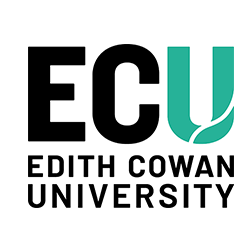Author Identifier (ORCID)
Christine Duffield: https://orcid.org/0000-0001-6534-8743
Abstract
Introduction: Job satisfaction and intention to leave have been consistently linked to the working environment. However, there are few studies of interventions for improving the environment or staff outcomes. Aim: To determine the impact of implementing a framework for safe nurse staffing on the environment and staff outcomes. This involved an assessment of required nursing hours per patient day, supernumerary nurse in charge and minimum 80:20 skill-mix, with intentional changes in staffing if required. Design: A pre-post observational design. Methods: This was a prospective observational study in six medical and/or surgical wards across three acute hospitals in Ireland. The outcomes were measured pre- and post-implementation, and included the environment, using the Practice Environment Scale of the Nursing Work Index; and job satisfaction and intention to leave using a dichotomised 4-point scale. Outcomes: Changes in staffing levels, adjustments to skill-mix and the supervisory role of the ward leader were seen following the implementation. A multilevel model found significant increases over time on three of the five Nursing Work Index subscales: Staffing and Resource Adequacy, Collegial Nurse-Physician Relations, and Nurse Participation in Hospital Affairs. Job satisfaction increased and intention to leave decreased, although the differences were not statistically significant. Increased job satisfaction was significantly associated with Staffing and Resource Adequacy, Collegial Nurse Physician Relations and Nurse Manager, Leadership and Support. A decreased odds of intention to leave was associated with increased job satisfaction. Conclusion: There were significant improvements in the environment following the implementation of the Framework. Three of the practice environment subscales were significantly associated with job satisfaction, while job satisfaction is a predictor of intention to stay. This study indicates that intentional changes to staffing can result in improvements to working environments which may in turn have an impact on job satisfaction and furthermore, on intention to stay. Impact: This study investigated intentional changes to nurse staffing in medical and surgical wards, examining the impact pre- and post-implementation. This study underlined that when staffing is based on a systematic approach, based on a Framework for Safe Nurse Staffing, a subsequent improvement can be seen in staff's perceptions of the work environment, along with improvements in staff outcomes. This research will impact on staff working in acute settings as a means of determining staffing and improving outcomes using a Framework for Safe Nurse Staffing. Reporting Method: STROBE checklist. Patient or Public Contribution: No patient or public contribution.
Document Type
Journal Article
Date of Publication
1-1-2025
Volume
81
Issue
9
Publication Title
Journal of Advanced Nursing
Publisher
Wiley
School
School of Nursing and Midwifery
Funders
Department of Health and the Health Research Board (FSN-2017-001)
Creative Commons License

This work is licensed under a Creative Commons Attribution-Noncommercial-No Derivative Works 4.0 License.
First Page
5973
Last Page
5983


Comments
Brady, N., O’Connell, S., Gilligan, D., Madden, C., Gannon, L., Howson, V., Ball, J. E., Murphy, A., Griffiths, P., Duffield, C., Scott, P. A., Carthy, V. J. C. M., & Drennan, J. (2025). Planned changes to nurse leadership, staffing and skill-mix: Impact on the working environment, job satisfaction and intention to leave. Journal of Advanced Nursing, 81(9), 5973-5983. https://doi.org/10.1111/jan.16752